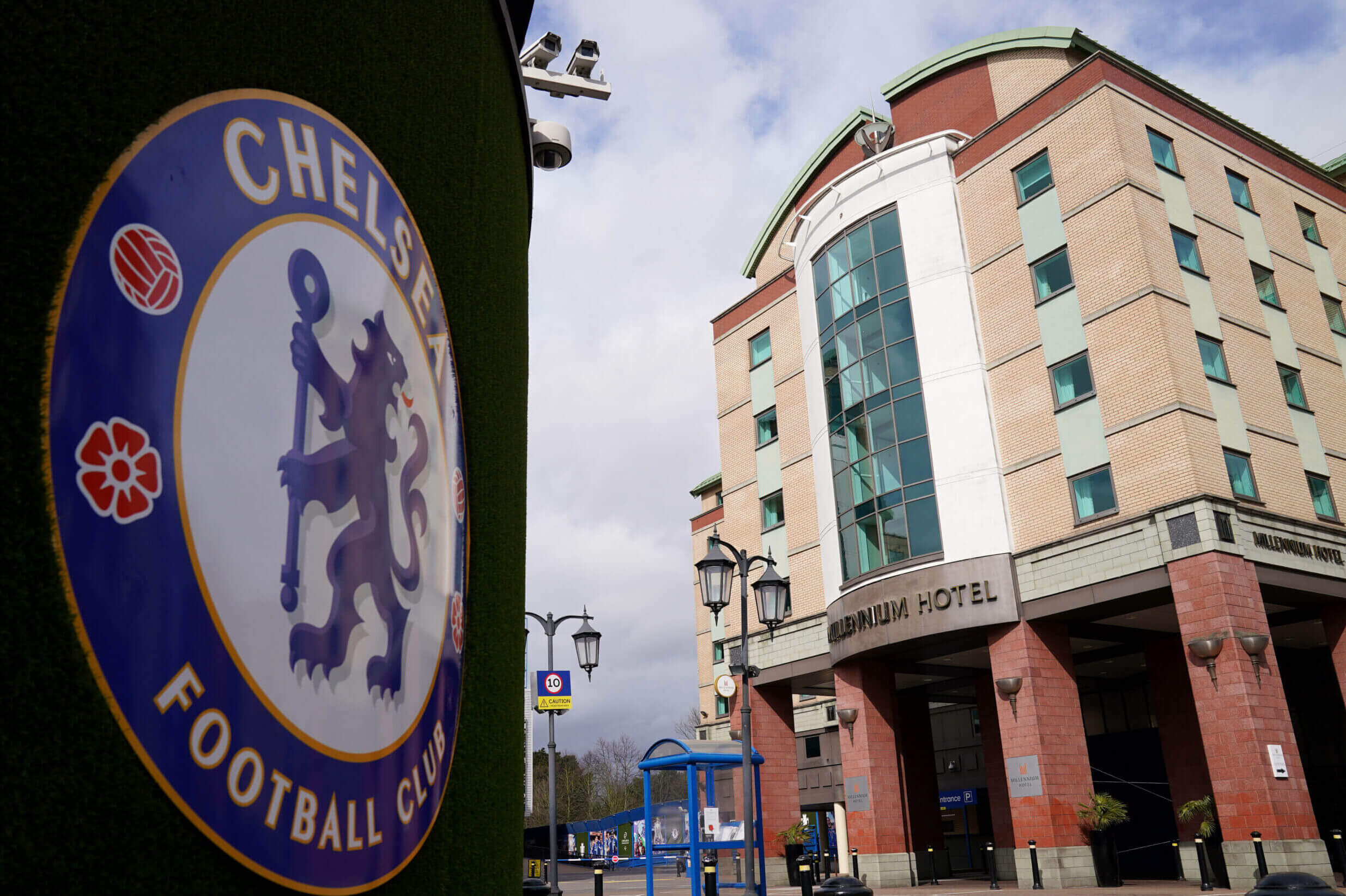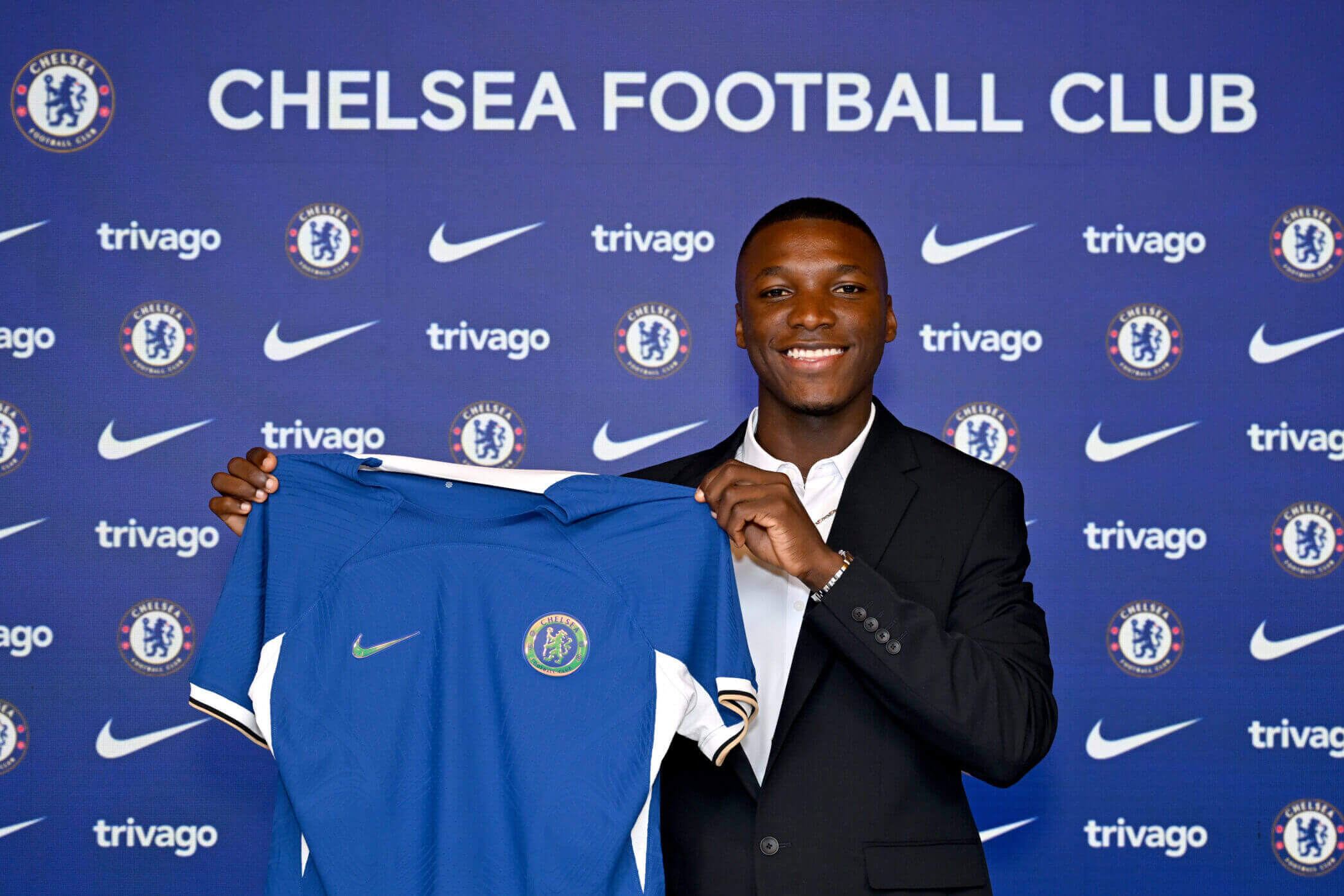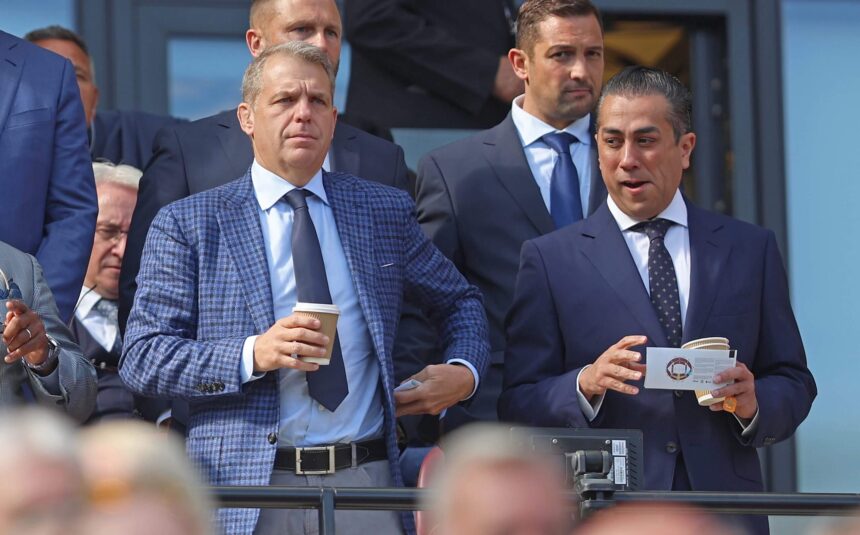Chelsea’s accounts have become essential reading since Behdad Eghbali’s Clearlake Capital and Todd Boehly bought the club in May 2022 — and the most recent filings are no different.
The full figures for 2023-24 were released on Saturday morning and confirm that Chelsea valued their women’s team at £200million ($258m) when selling it to Blueco 22 Midco Limited — a company within the club’s broader legal structure.
Advertisement
The £198.7m profit Chelsea generated from the sale enabled them to post a pre-tax profit of £128.4m for the year ended June 30, 2024, and meant they complied with the Premier League’s profit and sustainability rules (PSR).
Chelsea’s sale of its women’s team to a sister company, however, is still being assessed by the Premier League from a fair market value standpoint.
The club acknowledged that “the conclusion of this process may result in a material change to the gain recognised” in last season’s accounts.
UEFA takes a different approach from the Premier League. European football’s governing body does not allow for the sale of tangible assets to sister companies to count towards its financial fair play (FFP) calculations. UEFA is in talks with Chelsea over a financial settlement after its spending limits were breached.
Through a Premier League lens, Chelsea’s £128.4m pre-tax profit meant the club’s combined result across the 2022-24 PSR cycle was an £83.1m loss, which is allowed within their £105m PSR loss limit even before any deductions for allowable expenditure are made.
Without selling their assets to themselves — including two hotels in 2022-23 — Chelsea’s pre-tax loss over the last three years would have been £358.3m, more than three times the amount permitted by the Premier League, albeit their PSR loss reduces from that level once allowable costs are deducted.
What do these accounts tell us?
Although Chelsea posted a significant profit compared to their £90.1m loss in 2022-23, there was little change in the underlying numbers. Chelsea’s operating loss remained at more than £200m, improving marginally to £213.3m (2022-23: £218.0m).
Nearly all Premier League clubs lose money at the operating level, but Chelsea’s deficit is far and away the worst. Only Aston Villa’s losses (£145.3m) surpassed £100m, let alone £200m.
Boehly, left, and Eghbali bought Chelsea in May 2022 (Crystal Pix/MB Media/Getty Images)
That operating loss held steady despite revenue falling £44m (nine per cent) to £468.5m, driven by no European football for the first time since 2016-17. Broadcast income fell 28 per cent as a result, though that was partially offset by increases in gate receipts — up £3.6m to £80.1m — and commercial income, which increased by £15.2m to £225.3m.
Advertisement
Offsetting the reduced income were savings in the overall wage bill and a drop in player amortisation costs, though both of those come with caveats.
Chelsea’s wage bill fell £66m to £338m, but 2022-23’s figure included an estimated £45m in termination payments.
The fall in the underlying wage bill was, therefore, less, albeit the cost of sacking Mauricio Pochettino and his coaching staff in May is undisclosed.
Chelsea’s wages to revenue sat at 72 per cent, a seven per cent reduction in a year but still the highest of the ‘Big Six’ by nearly 10 per cent. Liverpool, the next highest, are on 63 per cent.
What about the women’s team sale?
The accounts confirm that Chelsea valued their women’s team at £200m, which is £105m shy of what Saudi Arabia’s Public Investment Fund, PCP Capital Partners and Reuben Brothers paid for Newcastle United in 2021.
Also worth noting when considering the £200m sale price is that Chelsea Women posted an operating loss of just under £9m on revenues of more than £11m in 2023-24.
The Premier League is still assessing the fair market value of this transaction, with Chelsea FC Holdings Ltd’s accounts warning that “the sale agreement contains a clause requiring an adjustment to the consideration receivable if the Premier League’s determination of fair market value differs from the £200m recognised”.
What happened with the hotels they sold in 2022-23?
The Athletic reported how the Premier League had adjusted the value of the two hotels — the Copthorne and Millennium — Chelsea sold to another intra-group company, Blueco 22 Properties Limited, in 2022-23.
At the time, neither Chelsea nor the Premier League confirmed how much had been knocked off the club’s £76.5m sale.
The latest set of accounts show that — in July 2024 — the Premier League reduced the profit by £6m, the impact of which will be seen in the 2024-25 accounts.

Chelsea sold one of their two hotels to another intra-group company (John Walton/PA Images via Getty Images)
Is there anything to know about the owners’ loans?
Alongside Chelsea’s accounts, those of other entities in their group structure also landed on Saturday.
They laid bare the underlying performance of the multi-club organisation Clearlake and Boehly head, as well as the extent of the borrowing required to fund it in its first two years.
As per the accounts of 22 Holdco Limited, the group held bank loans at the end of last June totaling £1.165bn, of which £755.2m is repayable by July 2027 and £410.2m by August 2033.
Advertisement
The former attracts interest at 7.5-8 per cent based on current rates, while the latter is serviced via payment in kind (PIK) interest that accrues year-on-year up to the point the loan is due for repayment.
The PIKs accrue at around 12 per cent currently; a rough estimate based on those rates and the August 2033 repayment date gives a total cost of servicing the loan of over £850m (if no repayments are made between now and then) — more than double the loan itself.
22 Holdco paid out £58.9m in cash interest in the year to June 30 2024, a figure that would have been higher if the PIK interest was paid as cash instead.
To date, those interest costs have been borne by Boehly and Clearlake — there is no evidence of Chelsea stumping up the sums to service the parent company loans.
While the PIKs aren’t impacting cash at the moment, they are accounted for in 22 Holdco’s income statement, where net interest payable last year was more than £100m. That contributed to a pre-tax loss for the group of £473.2m, taking losses over the last 28 months beyond £1bn.
What do these numbers tell us about their ability to spend big in the summer?
Since Clearlake Capital and Boehly bought Chelsea from Russian oligarch Roman Abramovich — following a forced sale by the UK government — for £2.3bn in May 2022, their tenure has been defined by heavy spending in the transfer market, totalling more than £1bn across three seasons.
In 2023-24, Chelsea splashed out £552.7m on new players — the second-highest single-season spend ever, only trailing their own £745.2m a year earlier.
This included the signings of Moises Caicedo from Brighton & Hove Albion for £115m, Romeo Lavia’s £53m switch from Southampton to Stamford Bridge, Cole Palmer’s £42.5m transfer from Manchester City and Christopher Nkunku’s £52.7m arrival from RB Leipzig.

Caicedo joined from Brighton for £115m in the summer of 2023 (Darren Walsh/Chelsea FC via Getty Images)
Chelsea can now boast four of the top five one-year spends by English clubs, with only Manchester City (£328.1m in 2017-18) getting in their way.
The upshot of that activity is Chelsea’s squad is now the most richly assembled in world football, by a long way. The club’s squad cost sat at £1.437billion at the end of June 2024; in second, Manchester City are over £300m behind.
Advertisement
The spending hasn’t stopped there, though.
The accounts disclose Chelsea spent £167.8m in this season’s summer window, and they’ve since committed to spend more than £60m on Geovany Quenda and Dario Essugo.
Although they have spent big in recent windows, Clearlake and Boehly have proven adept at making money on the players they sell.
The 2023-24 accounts show that Chelsea sold players, including Mason Mount, Ian Maatsen and Omari Hutchinson, for a combined £186.8m last season, a profit of £152.5m, the highest recorded in English football. Chelsea had set the previous mark of £142.6m in 2019-20. Across the last decade, Chelsea have sold players for a total of £1.197bn, generating £842.8m in profit.
As for whether they can embark on another round of spending in the summer, there is nothing — at least from a Premier League PSR perspective — to suggest they can’t. It will likely be a different story from a UEFA standpoint.
Is there anything else you should know?
Player amortisation costs fell by £13.1m to £190.1m, which could be viewed as a surprise given how Chelsea have continued to spend heavily in the transfer market.
The fall reflects their policy of handing out lengthy contracts, meaning their spending is spread out over a longer term than would usually be seen elsewhere. Premier League clubs voted in December 2023 to limit transfer fee amortisation to five years, though the limit was not backdated.
Even so, going forward, it means Chelsea’s amortisation figure per their accounts is likely to differ from the one they have to include in their PSR calculations.
UEFA has limited player amortisation to five years, and its limit crucially applies to post-June 2023 signings (the Premier League’s limit is only for signings made after December 12, 2023), meaning the fees paid for Caicedo, Lavia and Nkunku, among others, can be amortised across their contract lengths for Premier League PSR but only over five years for UEFA.
(Bradley Collyer/PA Images via Getty Images)










